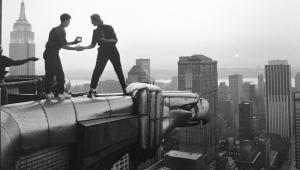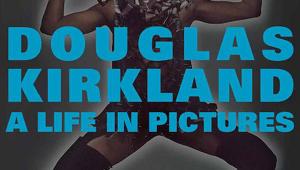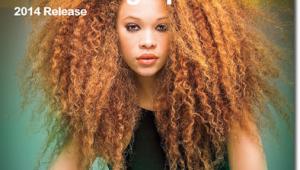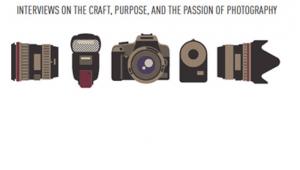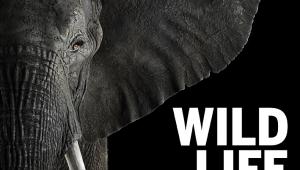Speedlights & Speedlites (Second Edition): Creative Flash Photography At Light Speed


Flash head tipped too low. “Spill” from the edge of the flash reflector strikes the subject as direct light, causing hard-edged shadows and uneven illumination.

The flash head is tipped upwards sufficiently to illuminate the subject with only soft, reflected light. No direct “spill.” Residential ceilings provide natural looking, 45˚ light.
Canon Speedlites and Nikon Speedlights are small flashguns that can be used on- or off-camera and that can provide big results—if you know how to use them properly. Acclaimed Boston photographers Lou Jones, Bob Keenan and Steve Ostrowski guide you through the technical and creative aspects of how to get the most out of these powerful tools in Speedlights & Speedlites (Second Edition), an indispensable guide packed full of inspirational images and comprehensive diagrams of the lighting setups used to capture them.
These units are significantly more advanced, lighter and considerably cheaper than a standard flashgun, and have many advantages. They are small (and cheap) enough that a number can be carried in your kit, and they can be used in combination, triggered wirelessly. They use through-the-lens (TTL) metering, which allows you to use the in-camera LCD and histograms to calculate the required power/direction, rather than having to use a light meter or trial and error. They use proprietary, dedicated technology (from Canon and Nikon) which means there are no compatibility issues.
Getting the most out of them, however, remains a mystery—most photographers still just use their speedlights in the same way as a standard flashgun. This is where this book comes in. —Liner notes supplied by the publisher.

After watching a roomful of traditional Mexican dancers spin and twirl, I was fascinated by how the women’s dresses were designed to augment their movements. So I climbed up on a ladder and tried to make clothing the star. So as not to hamper the woman from being able to spin anywhere she wanted, I clamped two Speedlights onto stands and bounced them off the ceiling. This gave me a fairly directionless, flat light falling onto the colorful layers of cloth. After that it was simply a matter of timing. I had to anticipate when the dancer would reach maximum rotation and also be facing the camera. It is not as easy as it sounds. My intention was to have the dress nearly fill the frame.


Turn and tip the flash head up when the camera is tipped down.
This second, updated edition contains both basic and advanced techniques for use of these companionable sources of light, and is amply illustrated with great images and, as important, diagrams of lighting setups and placement. Consider it a thorough and comprehensive guide and use it as both a wonderful way to learn more about getting the most from these light sources and as a practical way to follow the setups shown to master their application. Having witnessed workshops taught by Lou Jones (I have not had the pleasure of meeting the other two authors/photographers) I can truly say that this book delivers the energy, enthusiasm, and deep knowledge of craft that attendees enjoy. In this excerpt the authors get into the real deal on using bounce flash techniques. —Editor

The bounce card directs “spill” from the flash reflector forward, providing Fill. The built-in bounce card is small, creating a harder Fill. A larger white card attached to the flash with a rubber band or Velcro can provide softer Fill.

To create “Window Light,” turn the flash head sufficiently toward the wall. Avoid direct spill from the edge of the flash reflector striking the subject. Turn the subject slightly toward the wall, toward the direction of light. A custom white balance/white balance preset can be used for off-white walls.

Turning and tipping the flash into a light-toned wall, or walls, behind the camera creates a broad, soft, light that can be used as a front-lit Main or a Fill.
Bounce Flash: Direction And Quality Of Light
Accomplished photographers are always striving to do unique things with light. They only use direct flash to illuminate pictures in certain special situations as it is a clumsy use of such a sophisticated tool. One of the most skillful accomplishments is lighting that looks “natural.” Natural light comes from the sky, a window, overhead—anywhere but from directly in front of the viewer.
Bounce flash is a technique where the main light is redirected at a wall, ceiling, or some other surface in order to broaden and diffuse the light falling on your main subject. It is an easy and effective method used to produce soft but directional light with a TTL flash. Bounce flash makes small camera-mounted flash look like large directional off-camera light.
The compound articulation of the Speedlight swivel head means you can twist and turn the flash in almost any direction, i.e. up, down, behind you, and to the side, regardless of the orientation of the camera. In order to keep the light bounced off an appropriate reflector when switching from horizontal to vertical, you may have to ratchet the head like a Rubik’s Cube.
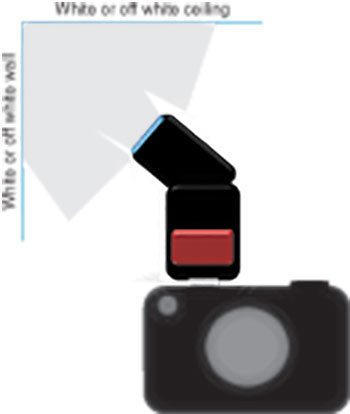
Directing the flash up at a 45˚ angle to the side creates a directional 45˚ light on the subject.

It is the greatest compliment to be entrusted with a fellow artist’s “public face.” Many years ago I had photographed this concert pianist’s first black/white PR pictures. And it is doubly flattering that he tracked me down again after so long to photograph his CD cover. He sent over a preliminary music CD so my studio could listen and derive inspiration. Then we scouted several locations for the shoot. But with each suggestion the degree of difficulty escalated. Finally, when I saw the studio where he made his recordings, many of the problems (but not all) were solved. The famous portrait photographer Arnold Newman could not have been more correct when he said, “Photography is one percent talent and 99 percent moving furniture.” We rearranged everything in the studio. Many Speedlights went into this image and I applied gels to some to add color to an otherwise monochromatic setting. But the biggest obstacle: grand pianos are black. The dark wood absorbs all light. We tried a lot of tricks but the only thing that worked was putting a light right inside. Another blue gel to tone it down and we were off. (Visit vimeo.com/loujones to see a behind-the-scenes video.)

Where To Buy
Speedlights & Speedlites: Creative Flash Photography at Lightspeed, Second Edition (Focal Press, ISBN: 9780240821443, $34.95) is now available for purchase on www.FocalPress.com, www.Amazon.com, and www.BN.com.

Excerpt from Speedlights & Speedlites: Creative Flash Photography at Lightspeed, Second Edition by Lou Jones, Bob Keenan, and Stephen Ostrowski © 2013 Taylor & Francis Group. All Rights Reserved.
Tips On Using Bounce Flash
• Visualize the “straight lines” of light leaving the flash head, striking the bounce surface and reflecting toward the subject. Study the image on the LCD monitor to determine the direction and visual effect of the bounced light on the subject.
• Turn or tip the flash head sufficiently. Avoid hitting the subject with direct flash from the edge of the flash reflector (spill).
• Bounce surfaces will absorb some light and some light may be reflected in directions away from the subject. Bounce flash also increases the distance of light travel, effectively reducing the light quantity because of the Inverse Square Law. (Well explained in an earlier section of the book—Editor.) It is not so much an efficient use of light as an aesthetic one.
• You may need to use a higher ISO and/or larger apertures. Check the flash Exposure Confirmation and the histogram when using bounce flash.
- Log in or register to post comments



